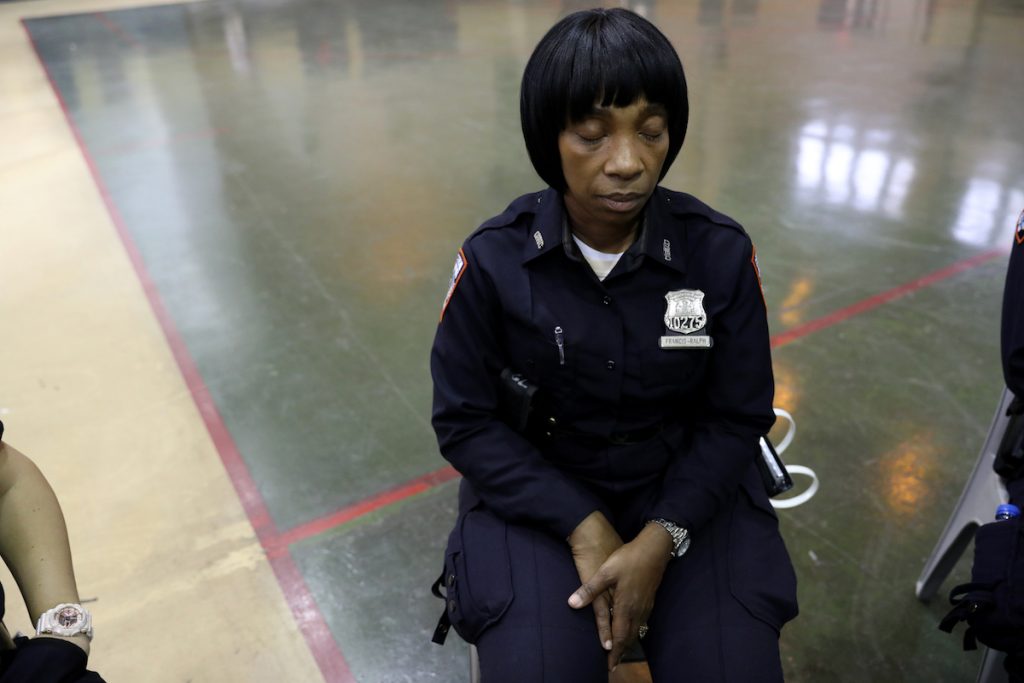“You guys know anything about stress management?”
Justin von Bujdoss is speaking to a group of about 40 correction officer recruits, dressed in gray uniforms and shiny black patent leather shoes, who have joined his weekly Monday afternoon meditation class for correction officers.
Von Bujdoss, 42, is a Tibetan Buddhist teacher and the first chaplain assigned specifically to correction officers (COs) working at Rikers Island, New York City’s main jail complex that sits on more than 400 acres in the East River. The chaplain, who previously served as resident lama and executive director of the New York Tsurphu Goshir Dharma Center, celebrated his first year on the job in September. He is also the department’s first Buddhist chaplain.
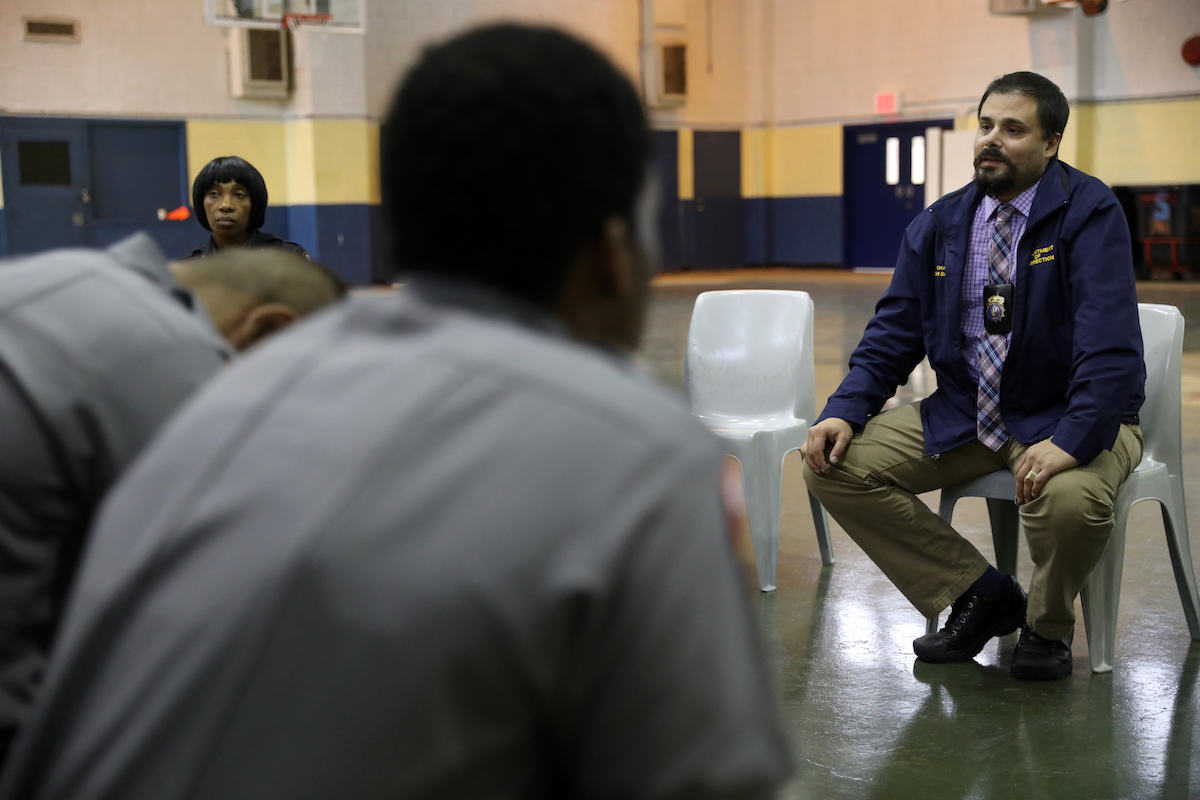
It’s no secret that life of Rikers is tough and dysfunctional. This year alone, an ex-correction officer was sentenced to 30 years in prison for the fatal beating of an inmate; the former corrections union chief faced bribery and conspiracy charge that ended in a mistrial; an inmate scaled the fence for a brief escape; the city settled a lawsuit with two women who claimed to have been raped by the same CO; and the New York State Commission of Correction deemed Rikers too dangerous for inmates to be transferred to from outside New York City.
Earlier this year, an independent commission recommended permanently closing Rikers within 10 years, and in June, Mayor Bill de Blasio released a 18-step report to permanently close Rikers Island and replace the troubled system with a “smaller network of modern, safe, and humane facilities.”
“Chaplaincy is an opportunity to provide increased engagement [and foster] deep relationships. We bring a benefit and allow people to be human in a place that is hard,” said von Bujdoss. “Suffering is everywhere, and I connect to this work of practicing on the charnel grounds,” von Bujdoss said, referring to a Buddhist term for graveyards where Tibetan yogis would practice that has now generally come to mean contexts of severe suffering, “[witnessing] the difficulties of human existence.”
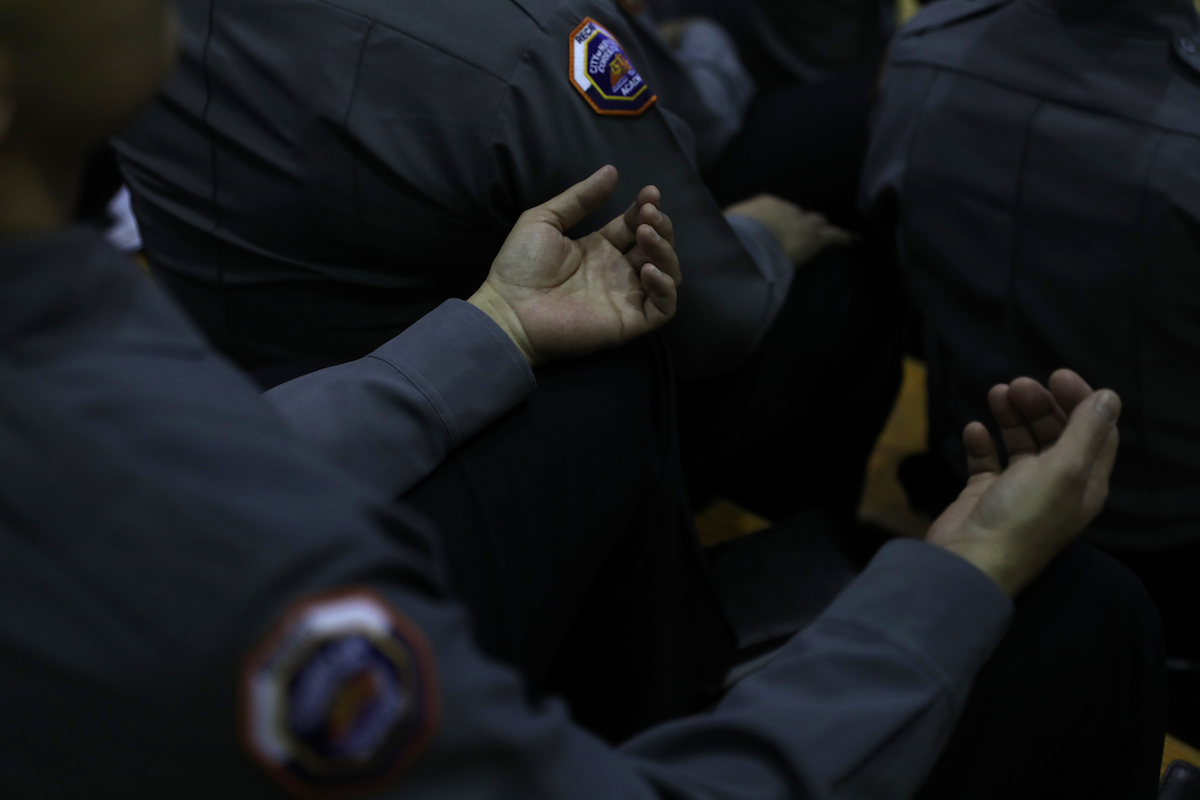
In addition to von Bujdoss, the Department of Corrections’ Religious Services Division has 12 full-time chaplains (five Catholic, three Protestant, and four Muslim), and 16 part-time chaplains (three Catholic, six Protestant, four Jewish, and three Muslim). Rikers inmates have access to meditation through the Rangjung Prison Dharma Project, which von Bujdoss started four years ago as a volunteer.
Last year, von Bujdoss was brought in by two deputy wardens to provide spiritual and emotional support to the staff at Rikers, which currently numbers 9,267. The warden and deputy warden, as he tells the meditation class full of recruits, thought meditation would be a good way to help correction officers reduce stress, lower their blood pressure, and help with decision-making.
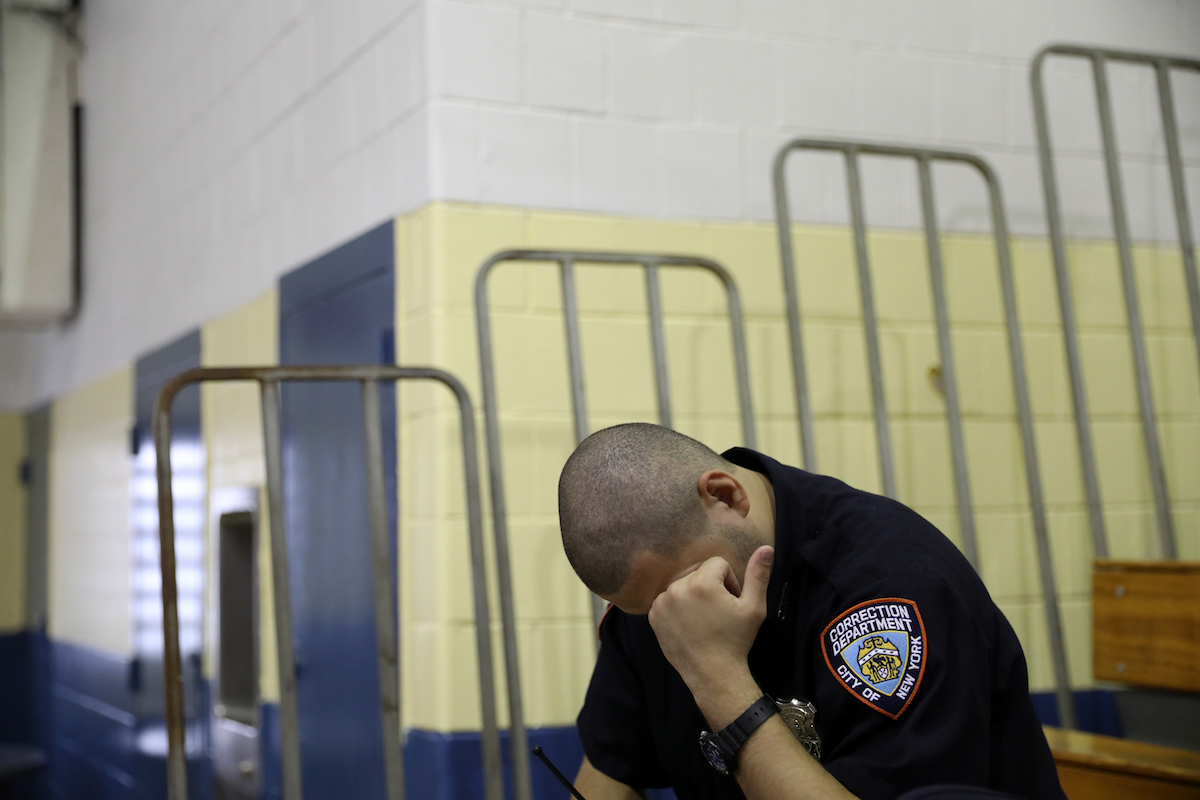
Correction officers experience high stress levels, burnout, and other mental health problems due to their profession, according to a 2017 report by the National Institute of Justice. They have a lower life expectancy at 59 years, experience the third highest rate of nonfatal workplace injuries behind police officers and security guards, have a significantly higher suicide rate, and experience a higher number of physical issues that include heart disease, hypertension, diabetes, and chronic neck, back, and knee injuries.
A Department of Corrections spokesperson said the department is working on expanding the number of chaplains to “provide high quality, sustainable spiritual care for staff.”
Correction officers elect to attend von Bujdoss’ class—”chap” or “Chaplain Von,” as they call him—giving up a portion of their shift change time to instead practice exercises that include a body scan, mindfulness of sound, and guided visualizations. There are about 30 regulars who have found their way to the class by word of mouth, though the four- days-on, two-days-off scheduling can make consistent attendance difficult.
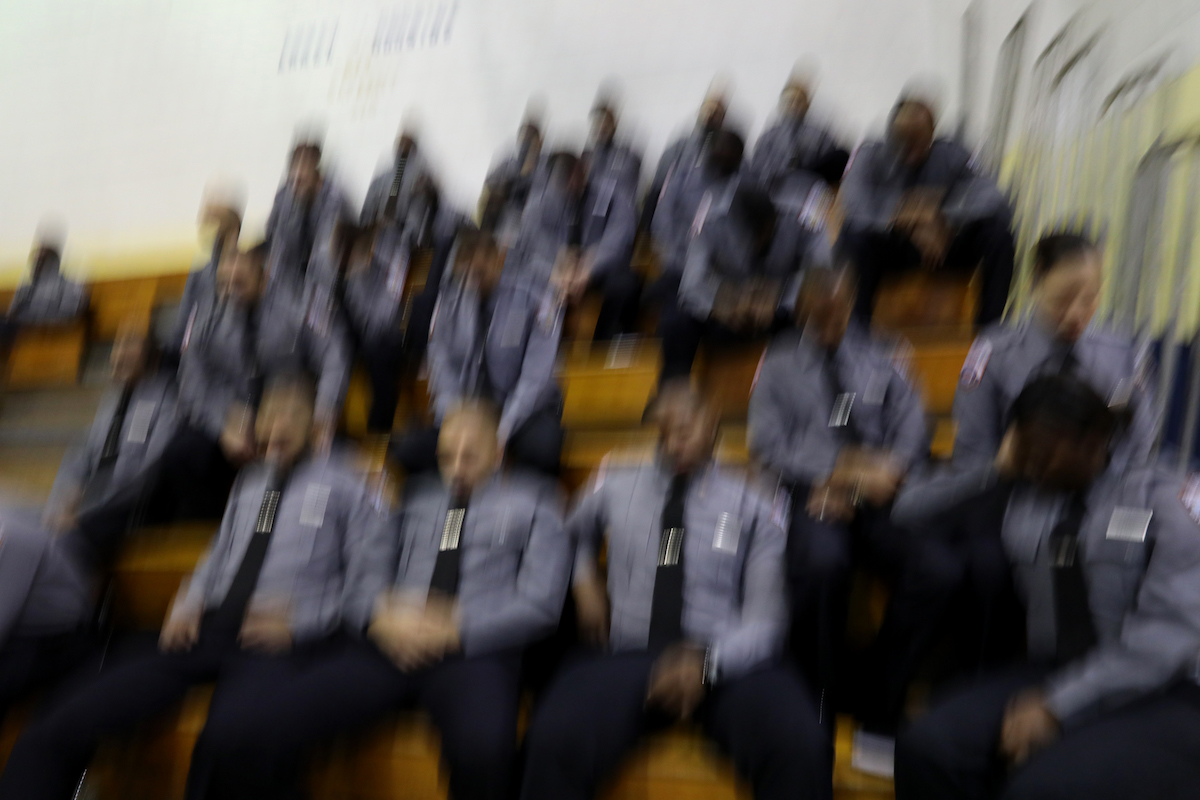
This Monday, the class was relocated from its usual meeting place in the chapel to the gymnasium. The new venue allows officers and officers-in-training room to stretch out on the bleachers, but is a far cry from a forest monastery or anything resembling a quiet practice place.
The gym is next to the recreation yard, and cheers, yells, claps, and other loud noises echo in. Inmates are led through the gym to get to the yard. COs pull back and forth on the locked door to signal that they need to be let in. A work crew of inmates in red-and-white striped uniforms rolls in large garbage bins. Buzzers sound, planes fly overhead, and von Bujdoss uses this cacophony in his instruction.
“Notice all the different sounds, try to keep you mind focused, and notice the sounds in the gym now,” von Bujdoss says during a guided meditation. “Maintain awareness to the sound of my voice, the sound of this gym.”
“We react to sound,” von Bujdoss says, just before two inmates come through and disrupt the class by saying “Shh!”
The recruits are participating just as much as the COs who chose to attend the class. In between meditations, von Bujdoss talks about the importance of checking in with your body when your stress level is activated, as it will be in this job. Fellow officers share their advice for managing the stress of Rikers—exercise helps. One officer shared that she makes a point to “take off her job” when she takes off her navy uniform.
CO Francis Ralph has been coming to von Bujdoss’ meditation class since July.
“I had to try it one time. And it makes you calmed, and can help you think clearly and be more patient,” Francis Ralph said. “It makes me just feel relaxed, despite the guys, the planes, the doors, all the sounds.”
For the final guided meditation, von Bujdoss takes the class on a “little trip,” out of the jails, past the hallways that have posters illustrating the correct way to handcuff an inmate, and graffitied words of wisdom that read “Boys make excuses, men make changes.” Von Bujdoss instructs the meditators to imagine getting up and walking out the gym to a helicopter that is waiting. The captain will take you anywhere you want to go, he says, and invites the class to imagine the aircraft taking off, with Rikers getting smaller and smaller in the distance.
“Notice what the temperature is like, what the air feels like. Is it humid? Dry?” von Bujdoss asks. An inmate bangs on the panes of glass looking into the gym and flips his middle finger. But the officers are somewhere else, at least for the next few moments.
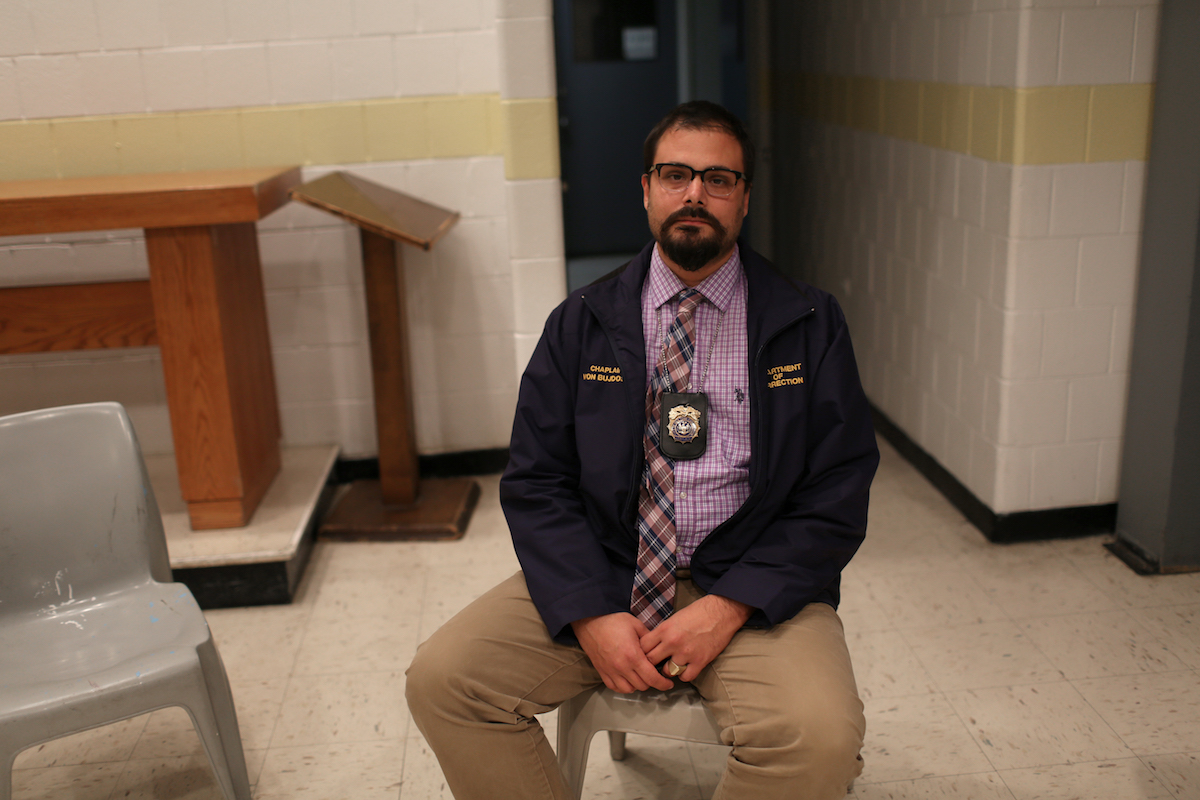
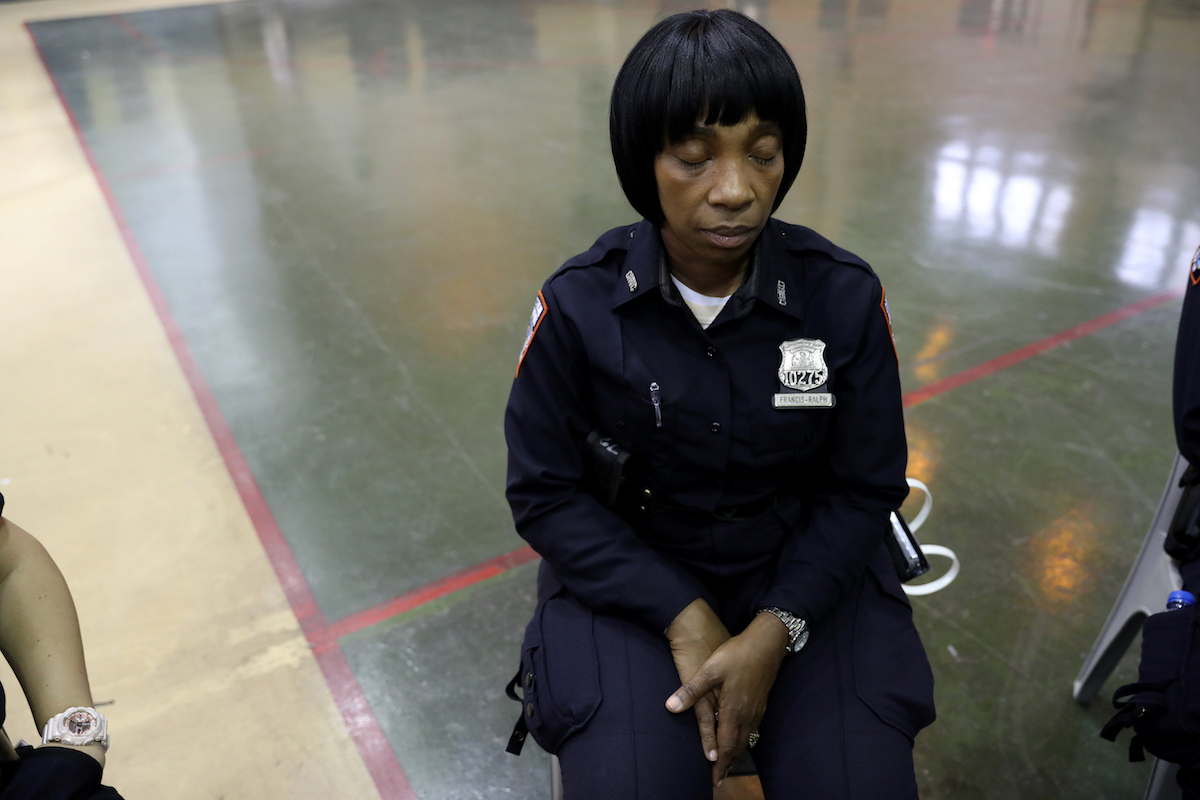
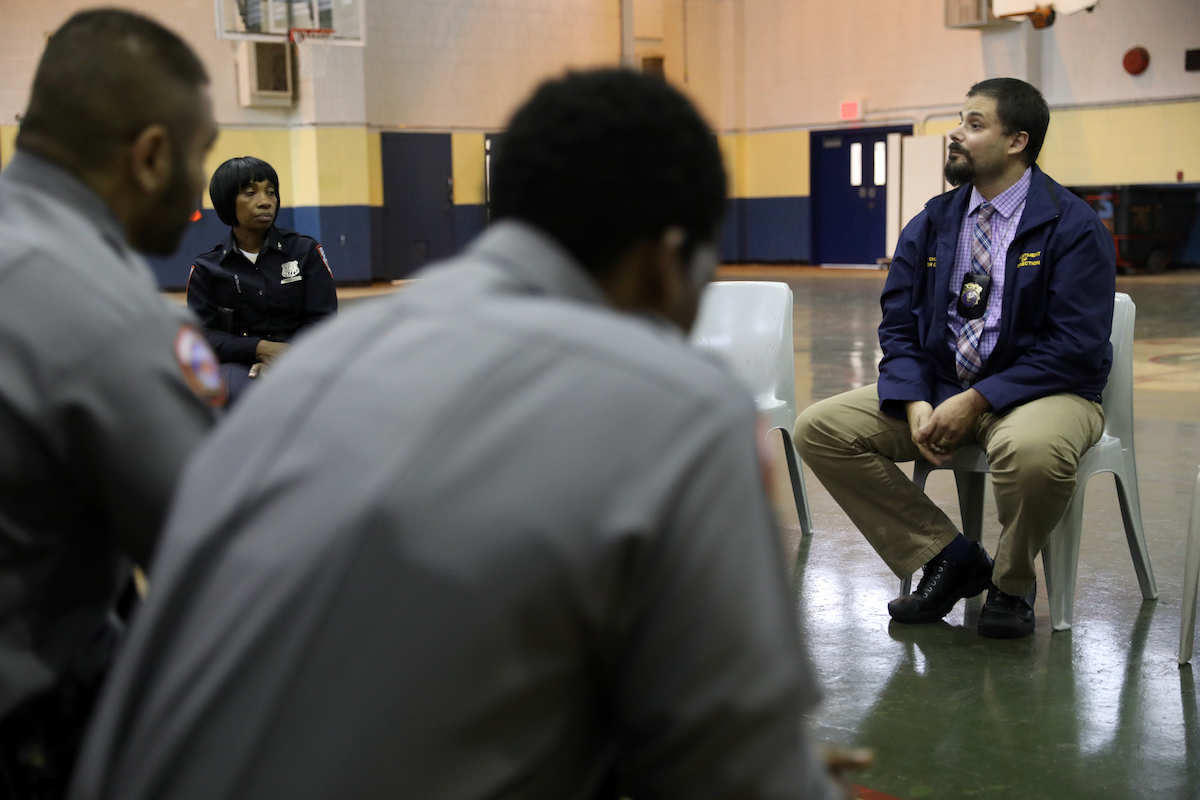

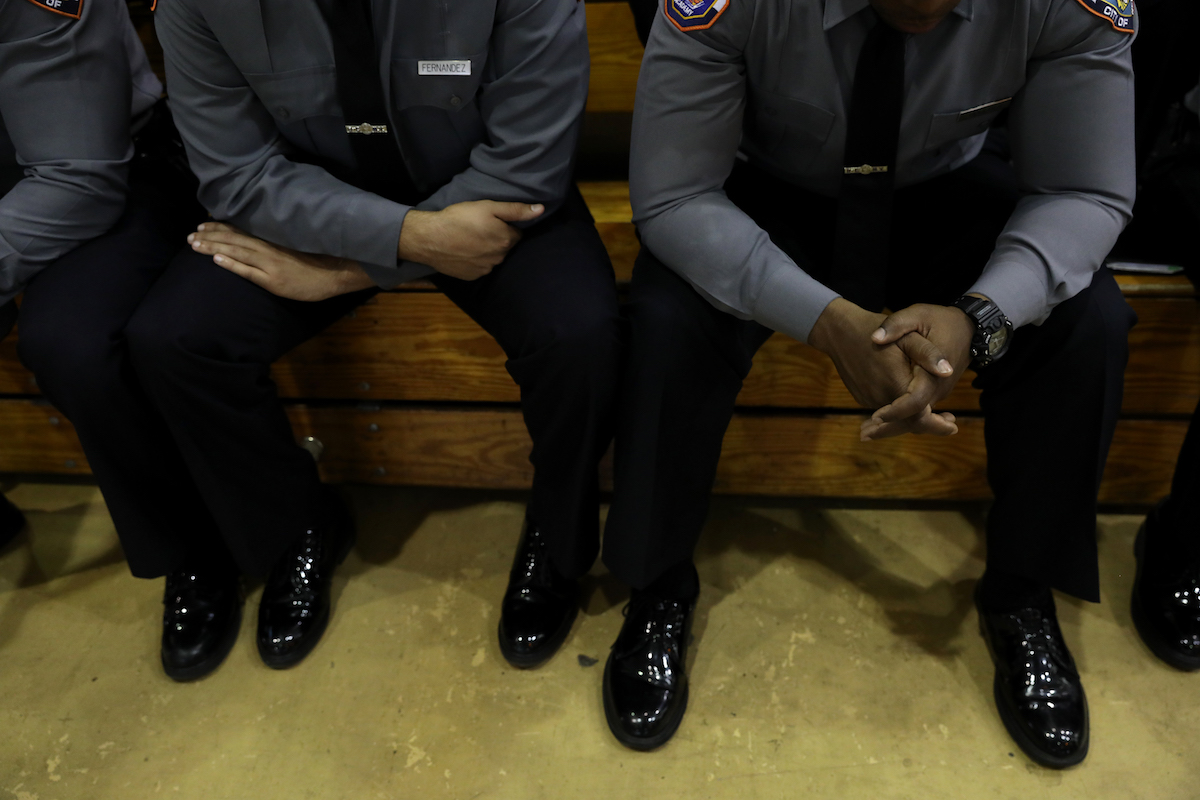
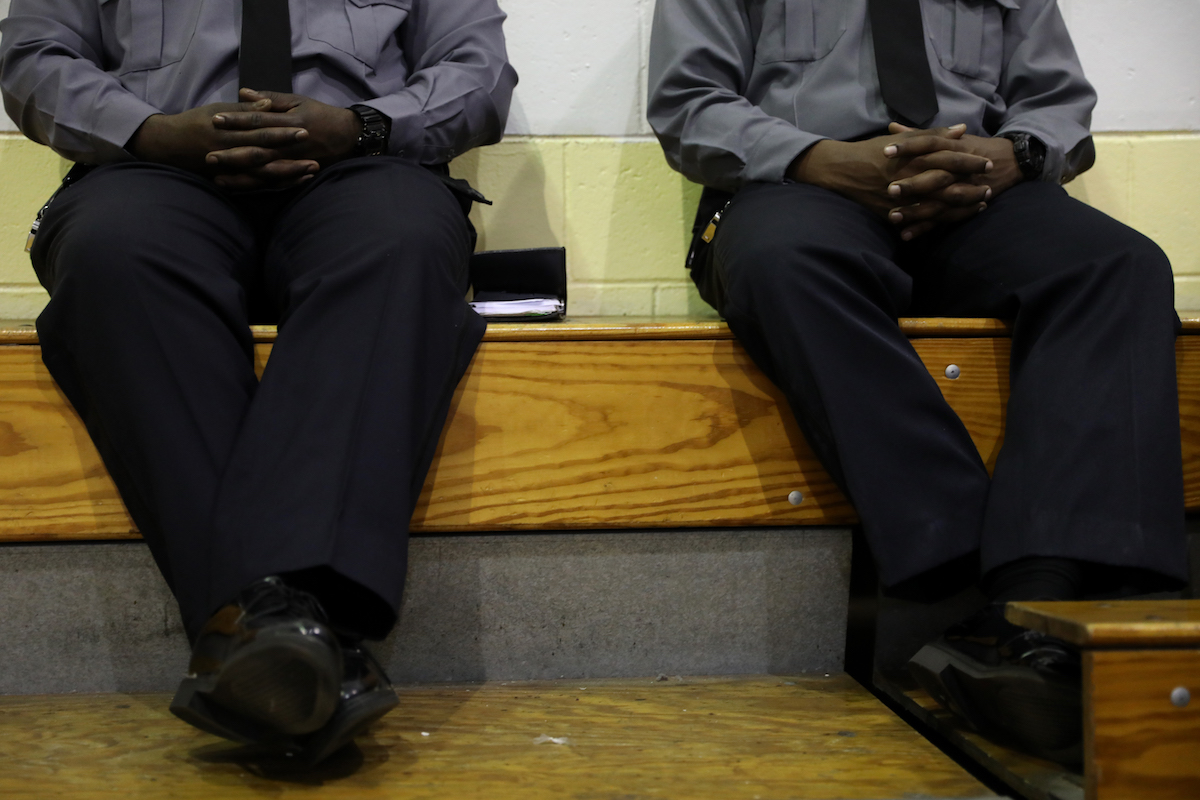

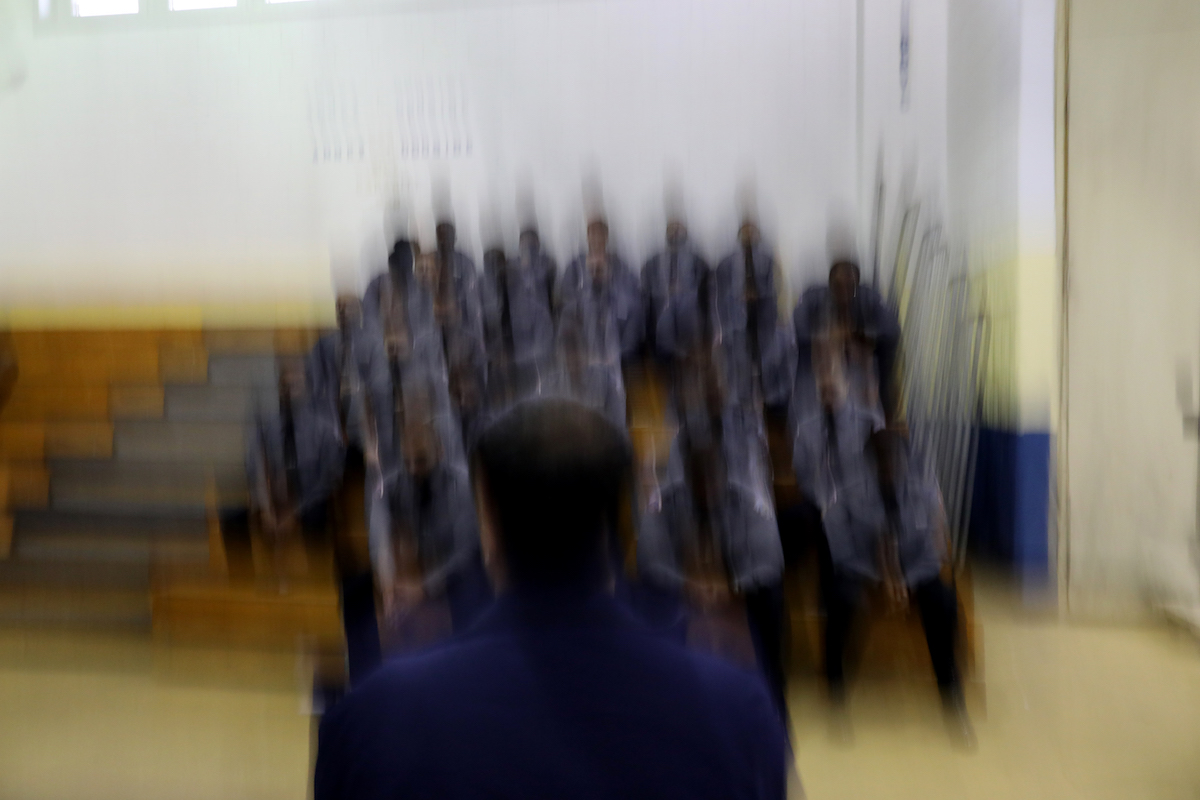
Thank you for subscribing to Tricycle! As a nonprofit, we depend on readers like you to keep Buddhist teachings and practices widely available.
